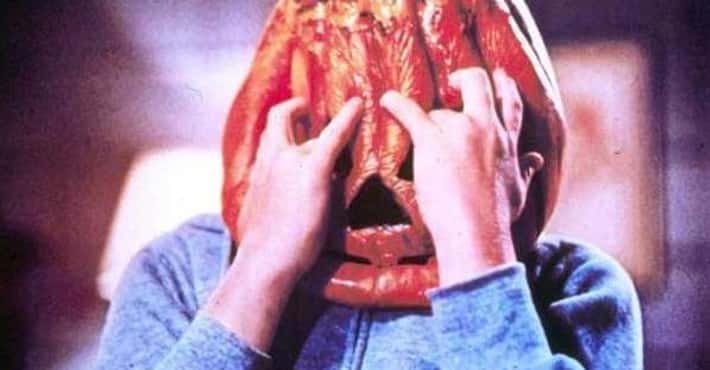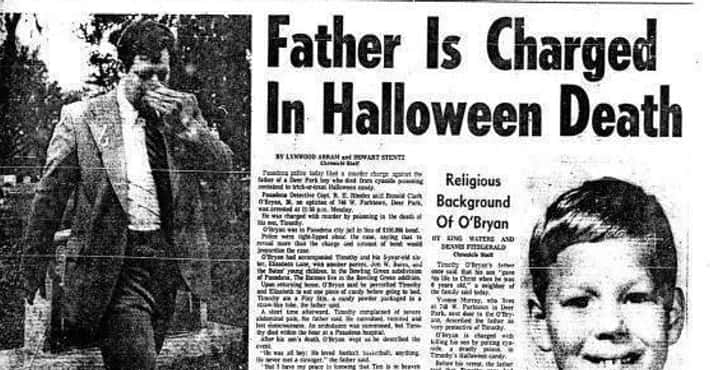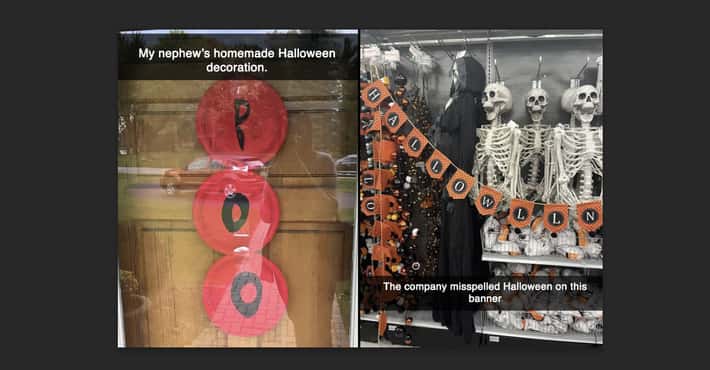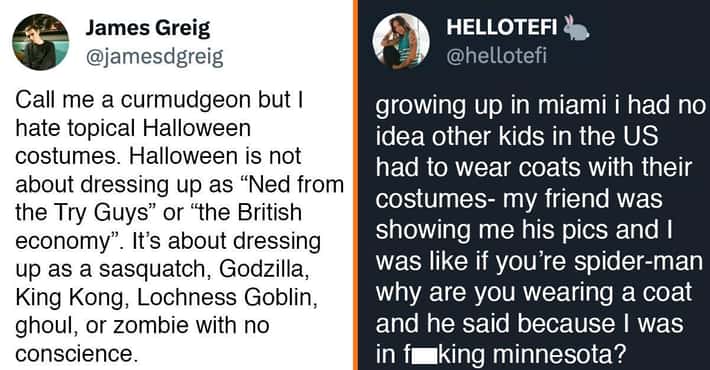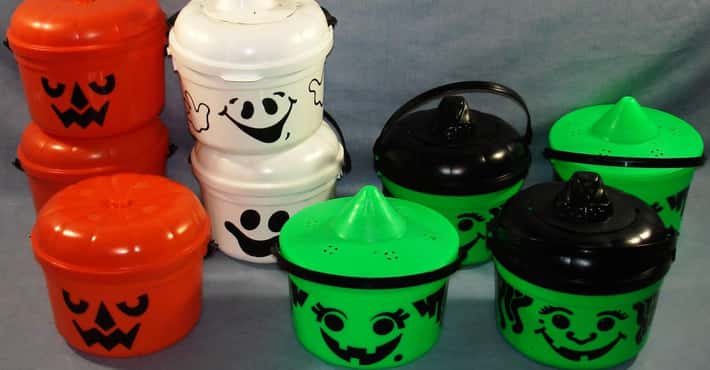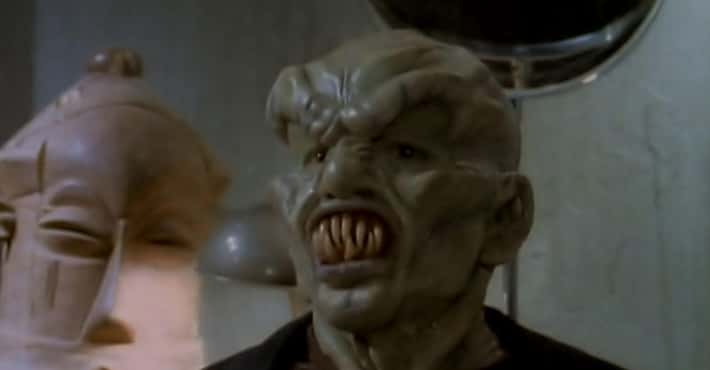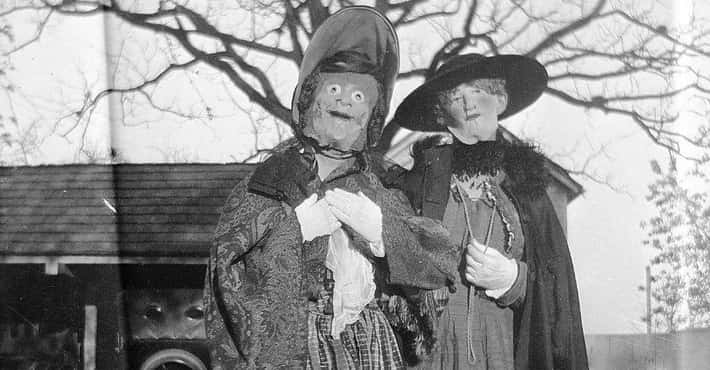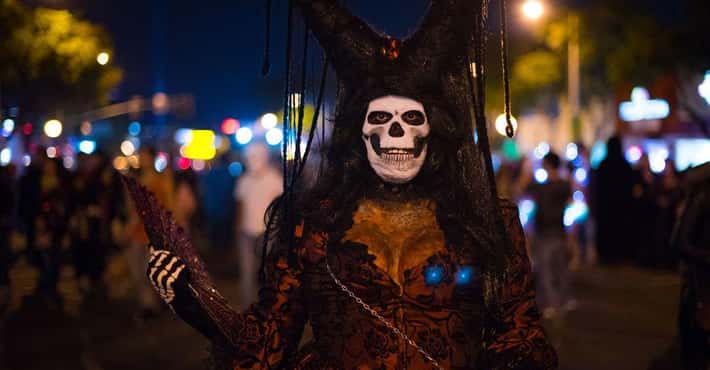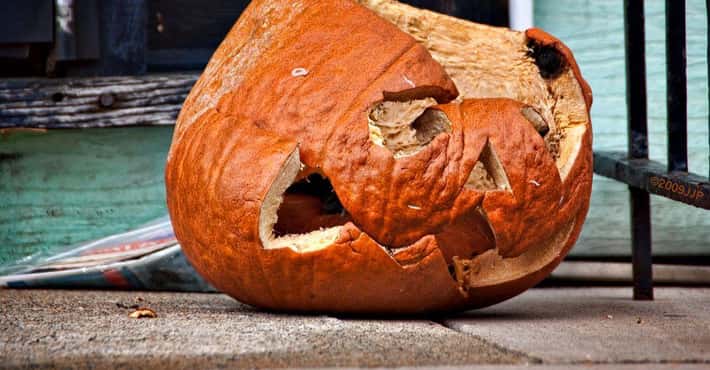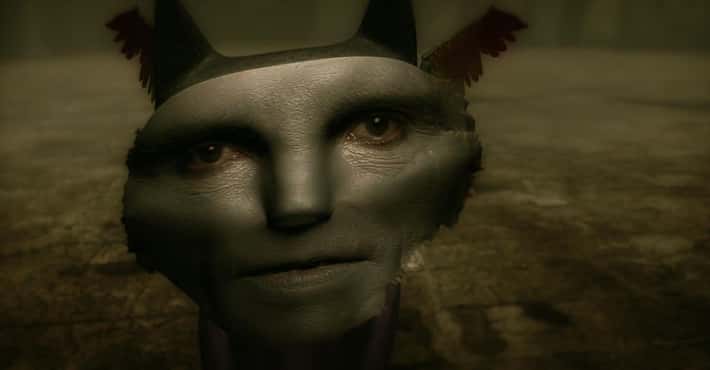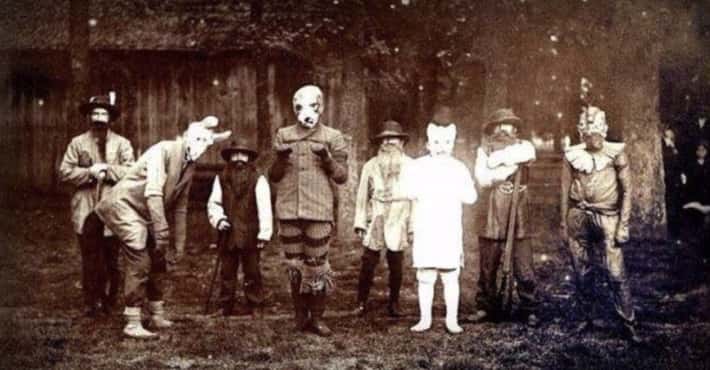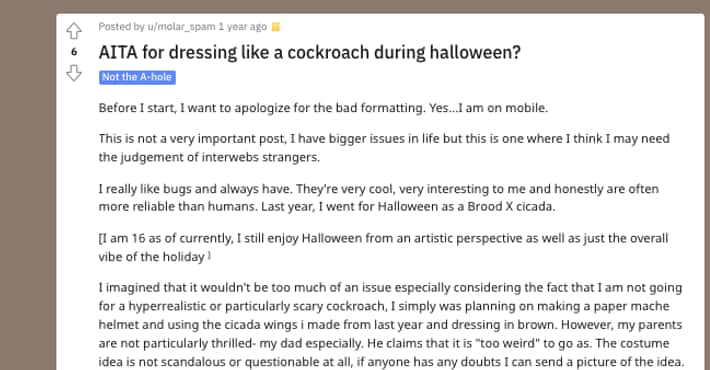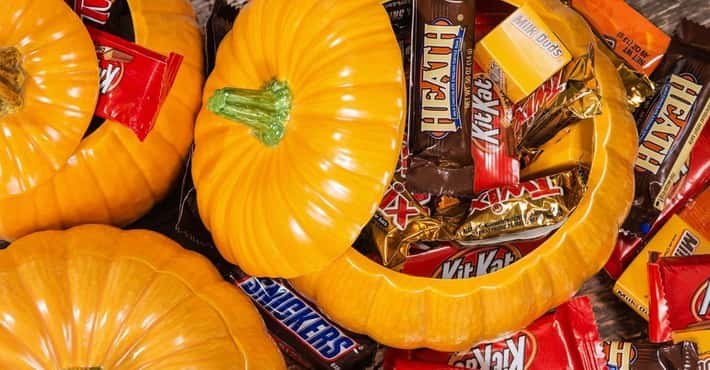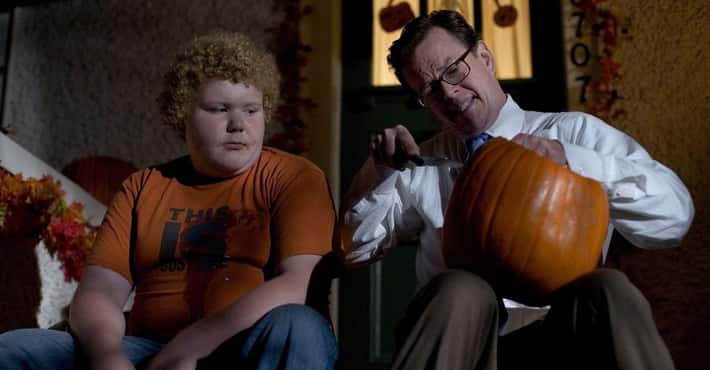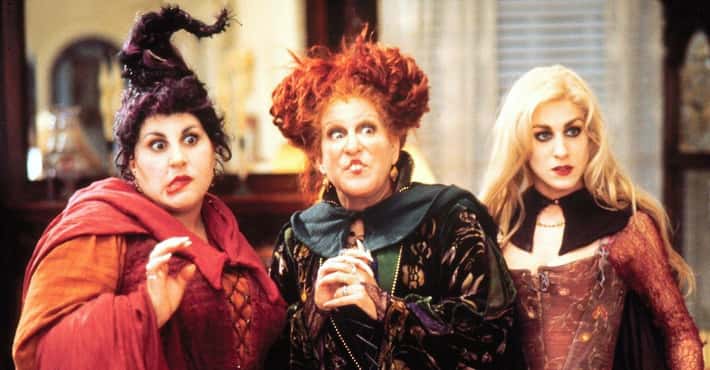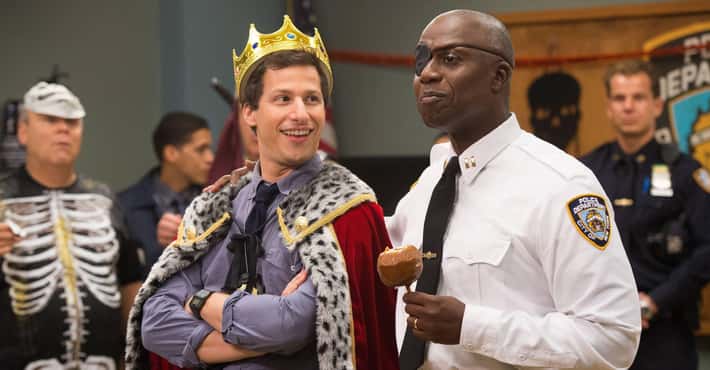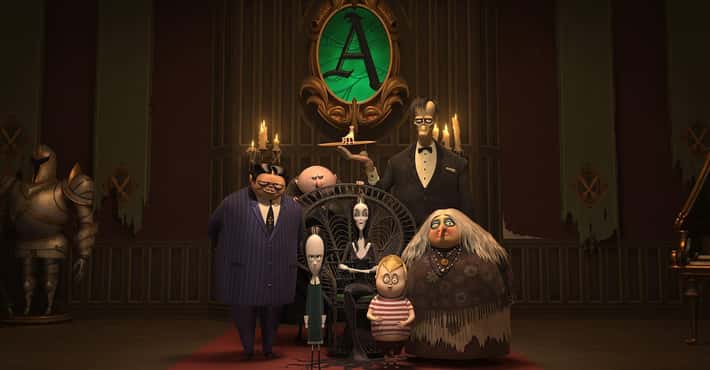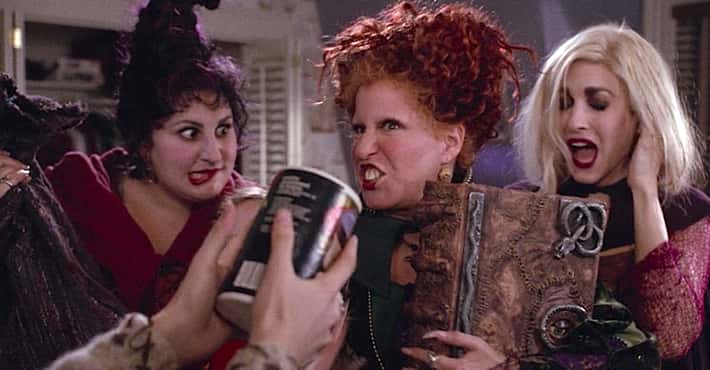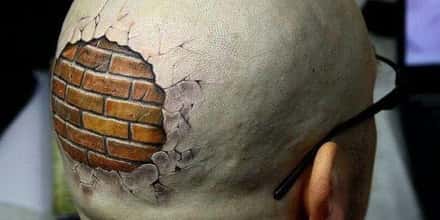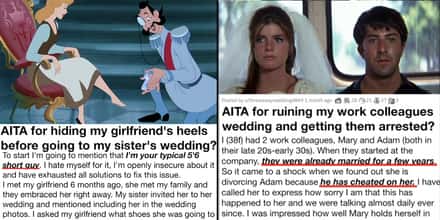Real Cases Of Razor Blades, Poison, And Other Objects Found In Halloween Candy
One Woman Handed Out Ant Poison To Children 'Too Old' For Trick-Or-Treating
In 1964, Long Island resident Helen Pfeil was apparently annoyed by all the children she deemed too old for trick-or-treating and made special "treats" for them. On Halloween, Pfeil handed out buttons of arsenic ant poison, dog biscuits, and steel woold pads that she had wrapped in tin foil. Doctors determined that the ant poison could have been deadly to small children, and investigators learned that Pfiel had handed out 12 of the buttons, which had a skull and crossbones on them, during trick-or-treating.
Pfiel, who had two children of her own, was eventually arraigned and sent by a judge to Central Ilsip State Hospital. She was later charged with child endangerment and plead guilty, though she was adament that she never intended to cause harm.
New Jersey Children Were Reportedly Given Apples Containing Razor Blades
In 1968, the New York Times reported 13 cases of children in New Jersey finding razor blades in apples they received while trick-or-treating. In 75% of these cases, the children were uninjured. However, fear of these razor-blade apples was so strong that the state passed a law to criminalize tampering with Halloween candy.
Despite the public reaction to these events, two detailed studies of the cases, conducted in 1972 and 1982, determined nearly all claims were false, and the children had put the razors in the apples themselves to propagate the urban legend. However, not every single instance was written off as a hoax.
One Woman Claimed She Ate A Candy Bar Laced With LSD
In 2013, a woman in Salinas, CA, ate a Snickers bar from her daughter's bag of Halloween candy after trick-or-treating. Reportedly, the woman quickly began feeling the "effect of almost a panic attack and then euphoria all mixed in" after finishing the candy.
She was then treated for symptoms similar to those that can occur when taking LSD, but what substance she actually consumed was unclear. Police went door to door investigating the neighborhood where the family had been trick-or-treating, but they eventually ruled the event an isolated incident.
The family expressed relief at the time that the young daughter hadn't eaten the candy herself.
One Man Poisoned His Children's Halloween Candy For An Insurance Payout
In 1974, Timothy O'Bryan's death became a national news story after the 8-year-old boy was poisoned by cyanide-laced Pixy Stix. Investigators eventually discovered that Timothy was poisoned by his own father, Ronald Clark O'Bryan, who was trying to collect a $40,000 life insurance policy on his son.
O'Bryan also gave poisoned Pixy Stix to his 5-year-old daughter and three neighborhood children, but police recoverd the candy before the children consumed it. O'Bryan became known as "The Man Who Killed Halloween" and "The Candy Man" in prison. He was executed by lethal injection in 1984.
An Ohio Boy Found A Razor Blade In His Snickers Bar
After trick-or-treating in Reynoldsburg, OH, in 2015, a boy began biting into a Snickers bar but stopped when something "didn't feel right." That something turned out to be a disposable razor, which was shoved into the nougat.
Police believed the incident was isolated but named no suspects.
A Dentist Handed Out Laxatives To Neighborhood Children
One of the earliest known incidents involving tainted Halloween candy dates back to 1959. A California dentist named William V. Shyne reportedly handed out 450 pieces of candy that later turned out to be laxatives.
Many local children became ill, and the source of the candy was quickly traced back to Shyne. The dentist later faced several criminal charges.
Three Canadian Children Received Tainted Candy One Halloween
Another Halloween 2015 incident involved an 11-year-old girl in Toronto who bit into a chocolate bar, only to find a razor inside. She was the third child in the city to find a sharp object in her Halloween candy that year.
Children in the city's Upper Beaches area found a needle and a thumbtack lodged inside their candy. Fortunately, none of the children were harmed.
One Boy Found A Razor Blade In A Sealed M&Ms Bag
In 2013, a 12-year-old Pennsylvania boy opened a miniature bag of M&Ms to discover a one-inch disposable razor. Oddly enough, the package didn't show any signs of tampering. The boy was unable to pinpoint which house the candy came from, because according to him, "Every other house, I think I got a pack of M&Ms."
Children In Two States Found Sewing Needles In Their Candy
In 2018, two children trick-or-treating in Marshfield, MA, found sewing needles hidden within their Twizzlers candy. That same Halloween, a mother in Tennessee also reported finding a sewing needle in her child's candy.
None of the children were injured, but Marshfield police did tell everyone to throw out all Twizzlers candy just to be safe.
Canadian Children Found Strange Pills In Their Candy
In 2015, Royal Canadian Mounted Police in Lloydminster, Alberta, reported at least two children had discovered pills in their candy. One child found an entire blister pack, and a second found a single pill stamped "APO" inside of a Snickers bar that had been opened and resealed.
APO is a stamp of Apotex, a pharmaceutical company, meaning the pill was likely a prescription drug of some kind.
Children Found Razor Blades In Two Different Types Of Candy In The Same Neighborhood
Two children who lived just two block away from each other in Manistee, MI, both found razor blades in their candy while trick-or-treating in 2015. A pack of Laffy Taffy and a Reese's Peanut Butter Cup both contained small razors similar to what would be found in a portable pencil sharpener.
The local police chief referred to the incident as a "new level of rotteness." Neither child was injured.
A Man Stuffed Needles Into Halloween Candy In 2000
James Joseph Smith of Minneapolis is known for handing out Snickers bars to local children that he had filled with needles. His crime did not result in any fatalities, but one teenage boy was pricked by a needle when biting into the candy.
Smith was later charged with one count of adulterating a substance with intent to cause death, harm, or illness.
One Child Received An Open Bottle Of Pills
In 2015, a Tucson, AZ, mom found a bottle of Dramamine in her 5-year-old daughter's candy bag. The bottle was open and contained six pills. While the substance is safe for adults to take when experiencing motion sickness, it can reportedly cause hallucinations and seizures in children.
The girl's mother warned parents to sort through their kids' candy, since she hadn't noticed the Dramamine at first.


